Earth Sciences Garden Monash University
Location \ Clayton, Melbourne
Client \ Monash University (Clayton Campus)
Budget \ AUD $2 Million
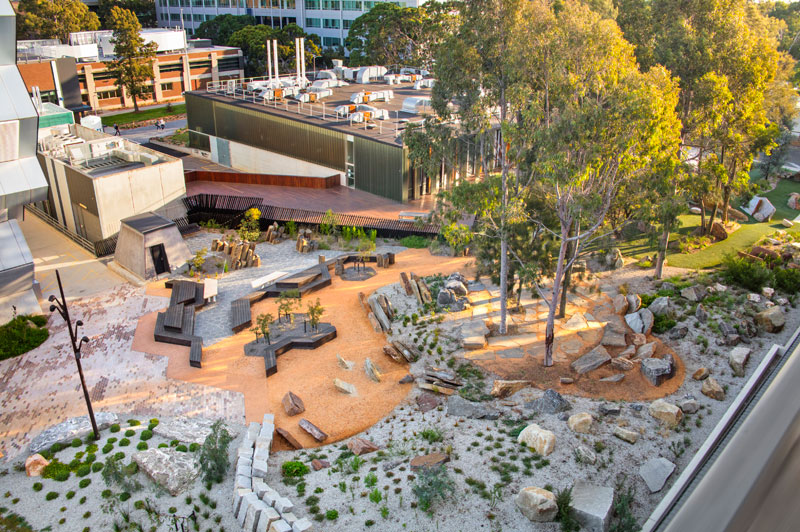
The Earth Sciences Garden at Monash University was created to showcase key features of the geology and geomorphology of Victoria and to establish an outdoor teaching laboratory for the study of Earth Sciences at Monash.
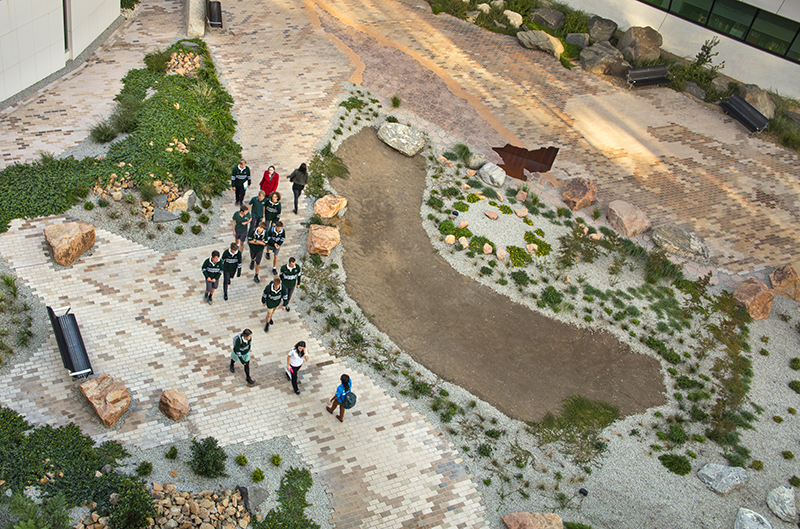
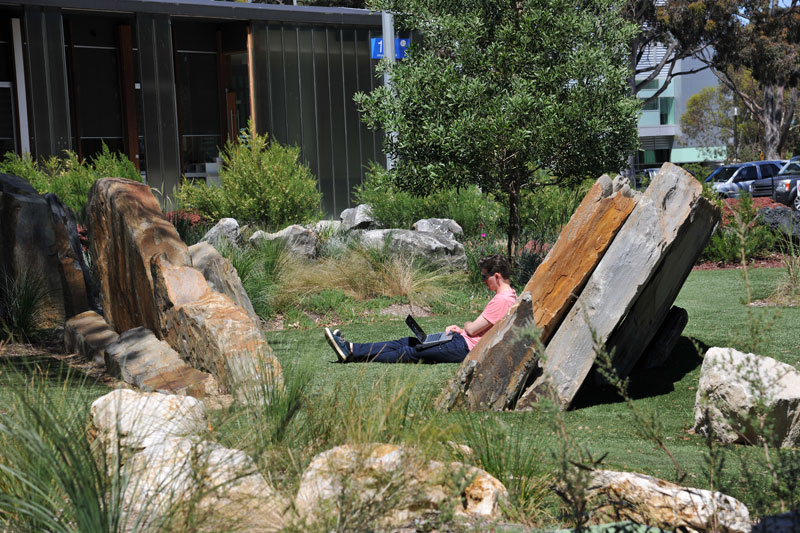
The garden integrates rigorous geological science with landscape architecture and has created a new form of system garden, where earth sciences, landscape design, and art together create a unique place of knowledge. It has been immediately recognized in the scientific community for its innovations in the teaching of geology, creating interest nationally and internationally.
The design brief was developed with the staff of the School of Earth, Atmosphere & Environment, based on a sketch map of the ‘underlying’ geology to which all garden rock specimens needed to be aligned, and the desire for students to be able to map and understand the hidden forces involved in geological formations.
Specific rock types of Victoria were to be included for detailed study. The new garden has set a precedent for the teaching of geological sciences and is used by all year groups, in particular for outdoor teaching with first year students.
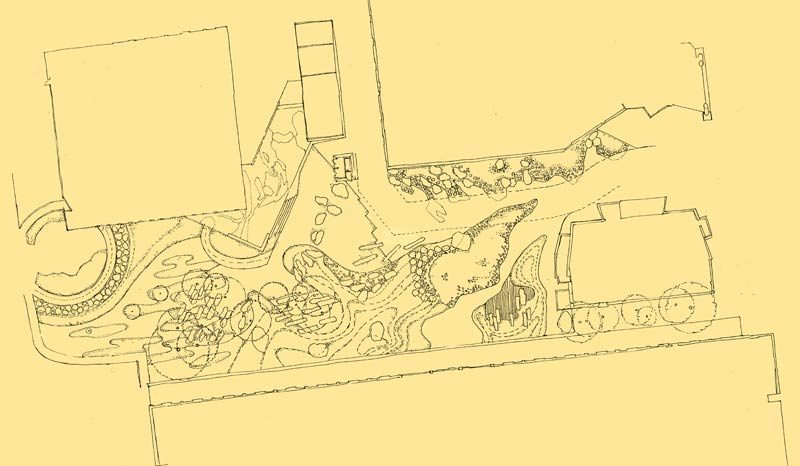
The selection of rocks was arranged around tracings of Victoria’s geological and geographical regions. These include the rocky Gippsland and Otway coasts, the western volcanic plains, the sandy dune fields of the Wimmera Mallee region, the bend of the Yarra River, and the outline of Lake Tali Karng. Artificial landforms drain towards this central cracking clay pan, which holds water for short periods after rain, becoming the ‘lake’.
Each rock type is representative of different formations and geological age. The angle, orientation, and specific placement of approximately 500 rock specimens tell a local geological story, while the larger arrangements create a diverse series of landscape spaces. The design evolved iteratively as rock became available, and was often adapted on site during delivery, to showcase specific highlights, such as the amazing tors of gneiss, one of which weighed in at over 11 tones.
Feature rocks, stone pavements, gravels, mulches and plantings all echo the environments of specific regions of Victoria. Forms and shapes collide, creating difference and roughness at boundaries and edges. The effect is more ‘national park’ than curated display garden.
The planting design reflects the unique flora of each region on display and demonstrates the vital biological links between the characteristics of each regional rock type, and the ecological niches created by diverse geological processes over time. Species were chosen to be emblematic of the various bioregions selected to be represented on the site.
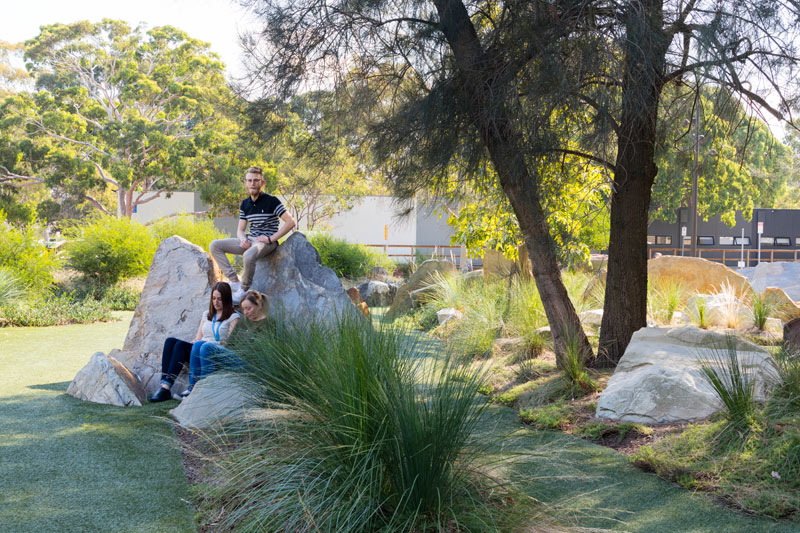
The Enigmatic, two-tone art ‘bombs’ are located amongst scoria rocks. Crafted by hand and fired for many days in a kiln, these are the rocks of the future, the detritus of the Anthropocene. Ejected from some future volcano, concrete and bricks and glass are melted together, and reconstituted to form a rocky residue; all that might be left of the city in geological time.
For our practice, this garden project has established a new benchmark. We have found fresh ways of thinking and doing. Form arrives from thinking about knowledge, the play between the real, representations, maps, and scientific enquiry. The garden has become immediately recognized in the scientific community for its innovations in the teaching of geology, creating interest nationally and internationally.
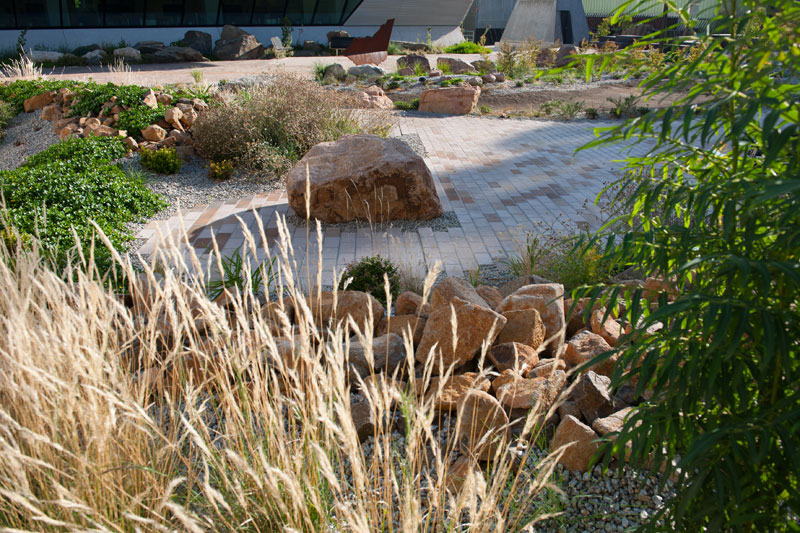
Renders below by Scenery. Images by John Gollings, Michael Wright and Julie Boyce Monash University.
Recipient of the following prestigious awards
2018 AILA National Landscape Architecture Awards – Civic Landscape
2016 Association for Learning Environments: Landscape/Outdoor Learning Area
2016 Think Brick Australia: Bruce Mackenzie Landscape Award Finalist
The AILA award jury cited the project as: “This project is a wonderful example of the university’s strategy to promote outdoor learning spaces. The ‘garden’ is an intricate and thoughtfully design space on campus that showcases the physical environment of the region. The project is conceptually innovative through its abstraction of the regions geology and is supported in its execution through a high level of detailing that ensures a unified space on campus”.















